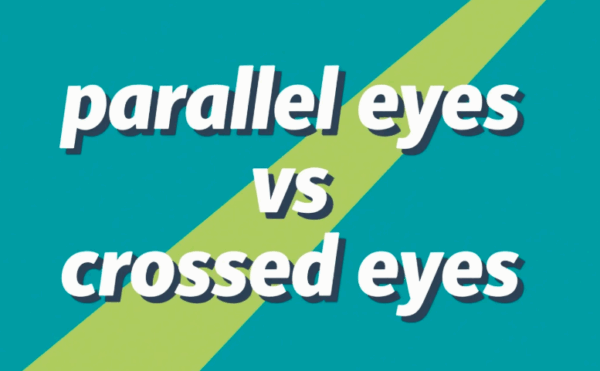Understanding how our eyes coordinate to perceive depth and spatial structure is crucial in fields such as vision therapy, stereoscopy, and glasses-free 3D technology. Among the fundamental concepts in binocular vision are the techniques known as parallel eyesand crossed eyes(colloquially called “strabismus” or “cross-eye” in extreme medical cases). These techniques refer to how the eyes align to view stereoscopic images or objects at different focal distances. Though they may appear similar in function, they involve fundamentally different mechanisms and visual outcomes.
Basic Definitions: Parallel Eyes and Crossed Eyes
What are Parallel Eyes?
Parallel eyes refer to a visual technique where both eyes are oriented straight ahead—parallel to each other—when viewing stereoscopic content. In this method, each eye independently focuses on an image intended for it without convergence. This is commonly used in glasses-free 3Dcontent where images are arranged side by side, and the brain fuses them to perceive depth. The viewer looks “through” the image as if focusing on something far behind it.
- Eye angle: 0° convergence
- Focus distance: Virtually infinite
- Use case: Stereograms, parallel-view 3D images
What are Crossed Eyes?
Crossed eyes, on the other hand, involve a deliberate convergence of both eyeballs toward the centerline—mimicking the movement typical of someone who is intentionally going “cross-eyed.” In 3D viewing, this technique allows the viewer to align the left and right images by focusing on a virtual point in front of the display.
- Eye angle: \~3°–8° convergence depending on distance
- Focus distance: Virtually in front of the screen
- Use case: Cross-view 3D images, magic-eye pictures

Key Differences Between Parallel Eyes and Crossed Eyes
Below is a professional comparison table highlighting the core distinctions between the two techniques:
| Aspect | Parallel Eyes | Crossed Eyes |
| Eye Orientation | Eyes stay parallel | Eyes converge inward |
| Visual Focus Distance | Behind the image | In front of the image |
| Stereogram Format | Left image on the left, right on the right | Left image on the right, right on the left |
| Learning Difficulty | Harder to master for beginners | Easier for most people to grasp |
| Fatigue Risk | Lower, due to relaxed eye muscles | Higher, due to sustained muscle convergence |
| Depth Perception Quality | Often more natural and stable | Can be vivid but prone to strain |
| Recommended Use | Professional 3D modeling, scientific imaging | Entertainment, casual 3D viewing |
| Compatible Screen Types | Suitable for wide-view displays | Better on small or mobile screens |
How Can Users Learn Parallel and Crossed Eye Techniques?
Mastering these techniques requires eye coordination, patience, and sometimes guided tools. Below are structured methods to help users practice each method safely and effectively.
Learning the Parallel Eye Technique
- Use of “Dot Guides”: Place two identical dots 6–8 cm apart on a piece of paper. Focus beyond the page until a third dot appears in the center.
- Stereogram Practice: Start with large, high-contrast stereograms specifically made for parallel viewing.
- Gradual Distance Training: Practice at varying screen distances, from 30 cm up to 1 meter, to strengthen the eye muscles’ ability to stay aligned.
- Duration: Start with 30 seconds per session, increasing to 5 minutes over weeks.
Learning the Crossed Eye Technique
- Finger Focus Method: Hold your finger 10–15 cm in front of your nose.Focus on your finger while a 3D image is behind it; allow the image to “merge” behind your finger.
- Image Alignment Tools: Use apps or online tools that guide image alignment through cross-eye method.
- Use Physical Markers: Draw a cross between two images and try to overlap them while keeping the cross in focus.
- Training Time: Most users master basic crossed-eye fusion in under a week with 5-minute daily sessions.
Considerations for Eye Health
- Avoid Prolonged Use: Extended sessions beyond 15–20 minutes can lead to eye strain or temporary double vision.
- Children Under 7: Should avoid frequent use of either technique without supervision, as their visual systems are still developing.
- Recommended Breaks: Use the 20-20-20 rule—every 20 minutes, look at something 20 feet away for at least 20 seconds.
Conclusion
Understanding the distinction between parallel eyesand crossed eyesis crucial for anyone interested in stereoscopic vision, whether for entertainment, professional tasks, or advancing in glasses-free 3D technology. While both methods aim to simulate depth perception, they employ opposite eye alignments and suit different contexts. With the right training and application, users can harness both techniques to experience immersive and strain-free 3D visuals.





